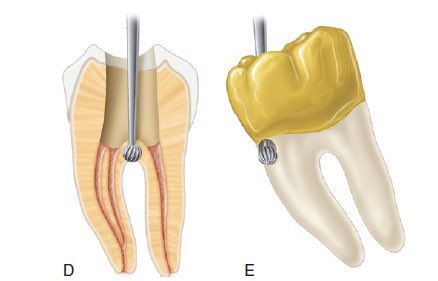
Perforation during access opening | Dentist
Access opening is the first step in the root canal treatment procedure. In this process the carious portion of the tooth is excavated and access to the pulp .i.e. to the root canals is made by airotor with a rotary bur. In this process of making an access to the opening of a root canal there might be an unintentional communication formed while cavity preparation. This communication between the root canal system to the soft tissues of the tooth or teeth is known as a perforation.
Tooth perforation may occur due to:
- Misleading diagnostics due to wrong angulation
- Maligned use of rotary burs
- While negotiating calcified and curved canals.
- In appropriate post space preparation.
Signs of perforation:
- Sudden bleeding and pain during instrumentation of root canals or post preparation in teeth.
- Suppuration resulting in tender tooth ,abscesses and sinus tract including bone resorption.
- Overgrowth of gingiva to the perforation site.
How to detect a perforation:
- Sudden bleeding from canal (paper points can be useful to detect bleeding)
- Radiopaque instruments going to the periodontal tissues, confirmed with radiographs or CBCT.
- Use of electronic apex locator.
- A narrow isolated deep pocket (in long standing root perforations)
If the root perforations are treated, there could be a sequel of event which might occur hindering to it’s healing process leading to precipitation of bacterial infections, either from the root canal or the periodontal tissues,or both.
Dr Chirag Chamria, OMFS Royal Dental
Once an infectious process has established itself at the perforation site, prognosis for treatment is precarious and the complication may prompt extraction of the affected tooth.
The measures of prevention before accessing canals, one must check the crown root alignment, carefully examine the radiographs for guidance of the shape and depth of the pulp chamber and even the width of the pulpal floor should be noted. While performing a root canal treatment a dentist should avoid over preparation. Flexible instruments with copious irrigation and lubrication.
Treatment: Factors that should be kept in mind before treating a perforation!
- Time from the perforation to detection
- Size and shape of the perforation
- The site of perforation
- Pre-operative radiolucency adjacent to perforation site
The materials used for root perforation repair are:
- Composite resin
- Resin modified GIC
- Zinc oxide eugenol
- MTA and other calcium silicate based material .
Two approaches are feature for treating this complication:
Non-surgical: When perforation is at an apical level or mid-root level a nonsurgical approach should be taken where MTA or calcium silicate based material is packed in the site. When perforation is at crestal or furcal level repair with composite resin, resin modified GIC, where the material is not constantly in contact with saliva can be done .
Surgical process includes in repair of periapical lesions and crown lengthening procedure have been recommended for single rooted teeth to bring the perforation to a coronal position. The prognosis of repairing perforation is comparatively poor to fair where as the success rate is 5-10%. MTA is a material which has reportedly enhance the success rate to 80.9%. Maxillary teeth showed significantly higher success rate after repair than mandibular teeth.


Leave a reply